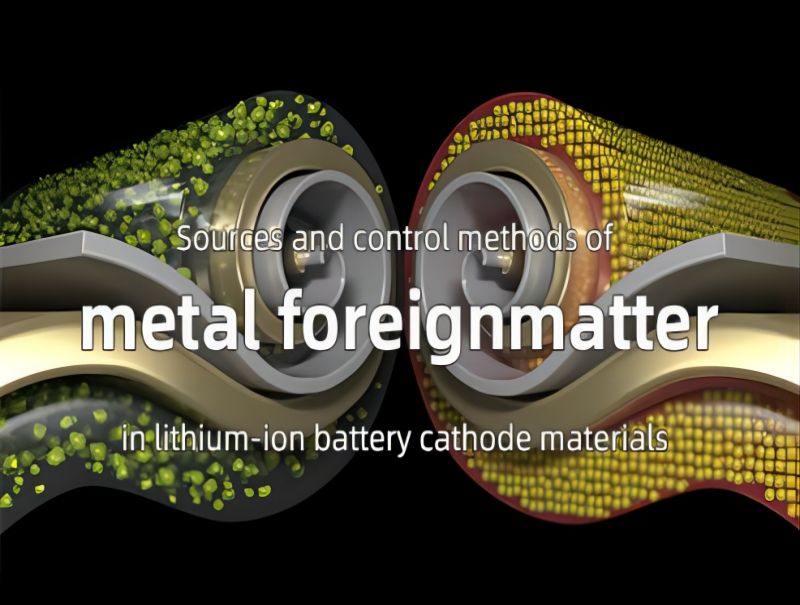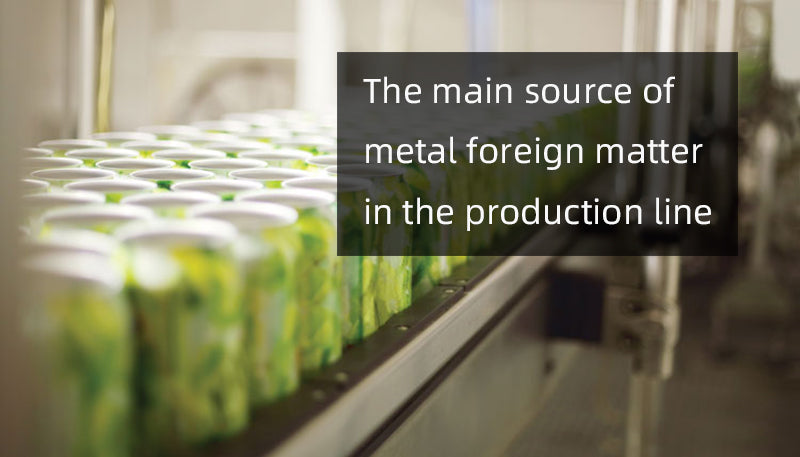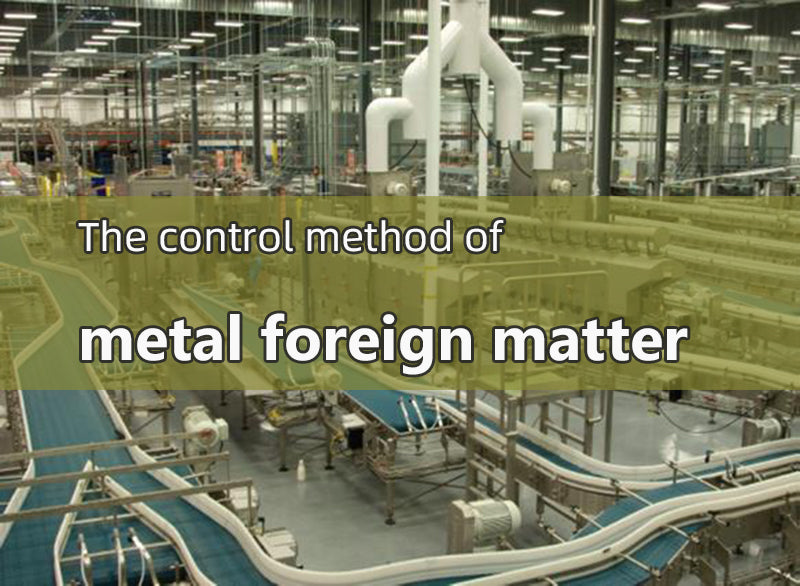
Main content:
During the formation stage of the battery, metal foreign matter will first be oxidized at the positive electrode and then reduced to the negative electrode.
When the metal element at the negative electrode accumulates to a certain extent, dendrites will form, causing the diaphragm to perforate, causing the internal short circuit of the battery, and increasing the battery self discharge rate. In severe cases, even The battery will catch fire and explode, which will affect the safety performance of the battery.
The hazards of metal foreign objects
Cathode material is one of the key materials of lithium-ion batteries, and it is also one of the important sources of metal foreign matter in lithium-ion batteries.
The metal foreign matter content of the positive electrode material directly affects the safety of downstream lithium battery products, so how to control the metal foreign matter content in the positive electrode material is a major problem for major lithium ion battery cathode materials manufacturers, and the control level of metal foreign matter has become a measure of lithium ion battery production. One of the core indicators of the battery cathode material production line.

The main source of metal foreign matter in the production line
The sources of metal foreign matter in the production line mainly include the following two aspects: one is the direct contact introduction of equipment and materials (direct introduction). The second is the introduction of metal scatter in the air into the material (indirect introduction). The following introduces the difference between the two introduction methods in detail: the main processes of the cathode material production line are: mixing, roasting and crushing, and the equipment involved mainly includes mixers, roller kilns and pulverizers.
Generally speaking, any metal parts on the equipment that are in direct contact with the material may cause a direct risk of introduction. Among them, the parts that have continuous relative movement with the material are more likely to be worn, which is the red line area and requires key protection, and parts with no continuous relative movement of materials also need to take necessary protective measures.
The sources of indirect introduction are more complicated. The flying objects in the air may come from the debris produced by the wear and tear of equipment parts, it may also be introduced by the external environment, and it may even be introduced by personnel, so it is more difficult to control.

The control method of metal foreign matter
There are several general rules for the protection of metal foreign objects in the design of the positive electrode material production line: all parts of the production line that are in direct contact with the material must be made of non-metallic materials or sprayed on the surface of the metal substrate for protection.
The metal substrate is generally required to be 304 stainless steel. The commonly used spraying materials include PTFE, ECTFE, WC, etc., and there are also ceramic sheets directly attached or integral ceramic protection. PTFE (polytetrafluoroethylene) coating has extremely low friction coefficient, good wear resistance and excellent chemical stability.
Almost any strong acid, strong alkali, strong oxidizing agent and solvent will not work on it at high temperature. The disadvantage is that its mechanical strength is not high. The spray thickness of PTFE is about 50 um (liquid). ECTFE coating also has excellent surface smoothness and battery corrosion resistance, and its strength is better than PTFE. Its spraying thickness can range from 0.2 mm to 1.5 mm.
WC (tungsten carbide) coating is the hardest and most wear-resistant of all coatings. The thickness of WC coating is generally between 0.2 mm and 0.5 mm. The disadvantage is that the friction coefficient is high and the cost is high. Ceramic protection is also more common now. Ceramics also have high hardness and good wear resistance.
The disadvantage is that the processing is difficult and the cost is high, and the thickness of the ceramic sheet varies from 5 mm to 10 mm. Generally speaking, 304 stainless steel sprayed with WC coating or ceramic sheet protection is used for parts that have continuous relative movement with materials, and 304 stainless steel sprayed with PTFE or ECTFE is more common for parts that have no continuous relative movement with materials.

Non-direct contact part control method
As for the parts of the production line equipment that do not directly contact with the material, they are also divided into two categories, one is the parts that have relative motion and friction to produce metal fines, and the other is the parts without relative motion.
For the former, physical isolation is generally adopted to prevent the metal fines generated by friction from flying into the material with the air, such as the transmission mechanism of the roller kiln. For the latter, general coating or painting is sufficient, such as equipment racks or outer casings.
Production line demagnetization design
In addition, in the process design of the production line, demagnetization operations need to be added to each process, and materials need to be screened and demagnetized in batches before the final product.
Process demagnetization generally adopts pipeline iron remover, which is divided into two types: drawer type and rotary type, which are selected according to the demagnetization speed and demagnetization effect required by different processes. The demagnetization of the finished product generally adopts a large electromagnetic iron remover and a multi-layer fence-type magnetic core to ensure the demagnetization effect.
Environmental control methods for cathode material production lines
The impact of foreign matter in the environment on metal foreign matter in positive electrode materials is random. A well-designed positive electrode material production line should maintain a relatively stable level of metal foreign matter in the product. If there is a large fluctuation in the content of metal foreign matter in the product, then in most cases is caused by changes in the environment.
It can be seen that environmental control is extremely important and cannot be ignored. All in all, the control of metal foreign matter mainly starts from several aspects such as production line design, equipment selection, environmental control and production management.
Related article: lithium ion battery electrolyte, battery materials, lithium metal battery
















